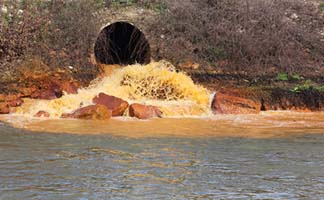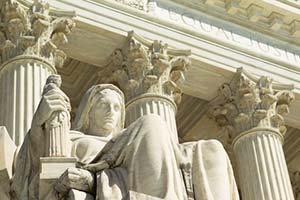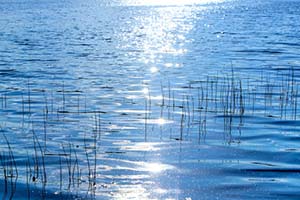Ideally, no one would pollute our water, but people do. Please support the Clean Water Act to protect our streams, wetlands, rivers, lakes, and oceans.
 Since the Clean Water Act was passed over 40 years ago, we have made great strides in cleaning up our rivers, lakes, and coastal waters, but one-third of our nation’s waters are still polluted. Clearly, we have a lot more work to do. Clean and safe water is essential to our very existence!
Since the Clean Water Act was passed over 40 years ago, we have made great strides in cleaning up our rivers, lakes, and coastal waters, but one-third of our nation’s waters are still polluted. Clearly, we have a lot more work to do. Clean and safe water is essential to our very existence!
What can we do?
Besides not polluting water directly, we can support efforts by the U.S. Environmental Protection Agency (EPA) and U.S. Army Corps of Engineers (Army Corps) to protect our waters via the Clean Water Act.
Specifically, we can submit a comment in favor of the proposed rule “Definition of ‘Waters of the United States’ Under the Clean Water Act” that is intended to clarify and better define which waters are protected by the Clean Water Act.
Clean Water Act in Brief
Clean water in the United States got a huge boost in 1972 when Congress enacted the Clean Water Act (CWA) and gave the newly formed Environmental Protection Agency the responsibility for regulating U.S. water quality and pollution standards.
The objective of the Clean Water Act is:
“…to restore and maintain the chemical, physical, and biological integrity of the nation’s waters by preventing point and nonpoint pollution sources, providing assistance to publicly owned treatment works for the improvement of wastewater treatment, and maintaining the integrity of wetlands.”
Clean Water Act Highlights
- The EPA has the authority to set effluent and wastewater standards for “waters of the United States.”
 It is unlawful to discharge pollutants into U.S. waters without a permit.
It is unlawful to discharge pollutants into U.S. waters without a permit.- States have primary responsibility for setting and maintaining water quality, with EPA oversight.
- The Army Corps is responsible for ensuring navigable waters remain navigable and issuing permits for dams, structures, and discharges of dredged or fill material.
Two previous posts covered clean water legislation more in-depth, Clean Water Laws – Prior to Safe Drinking Water Act of 1974 and Safe Drinking Water Act of 1974 and Beyond.
Clean Water Act – Proposed Rule Clarifies Protected Waters
Protecting waterways and water bodies from pollution is crucial to making sure clean water is available for drinking, growing food, industrial processes, wildlife, and recreation. Although the Clean Water Act does not specifically regulate drinking water, one in three Americans gets their drinking water from public water systems that rely in part on water from seasonal streams and wetlands.
 U.S. Supreme Court decisions in 2001 and 2006 resulted in confusion about which waters are protected by the CWA and led to difficulty enforcing the law. The EPA received requests to remedy the situation from government officials, industry and agriculture representatives, environmentalists, and the public.
U.S. Supreme Court decisions in 2001 and 2006 resulted in confusion about which waters are protected by the CWA and led to difficulty enforcing the law. The EPA received requests to remedy the situation from government officials, industry and agriculture representatives, environmentalists, and the public.
On March 25, 2014, the EPA and Army Corps announced a proposed rule “Definition of ‘Waters of the United States’ Under the Clean Water Act” to clarify the jurisdictional scope of the Clean Water Act.
“The purposes of the proposed rule are to ensure protection of our nation’s aquatic resources and make the process of identifying ‘waters of the United States’ less complicated and more efficient.”
As part of the process for determining a more specific definition for “waters of the United States,” the EPA and other organizations studied over 1,000 peer-reviewed scientific articles on how connectivity or isolation of streams and wetlands affects downstream rivers, lakes, estuaries, and oceans. The September 2013 draft of the report Connectivity of Streams and Wetlands to Downstream Waters: A Review and Synthesis of the Scientific Evidence is available to the public.
Proposed Definition of “Waters of the United States”
Below is a simplified version of the proposed definition of “waters of the United States,” as well as a few exemptions. For the actual text, read Proposed “Definition of ‘Waters of the United States’ Under the Clean Water Act” 40 CFR 230.3.
- All waters used for interstate or foreign commerce (including in the past or possibly the future), including all waters subject to ebb and flow of the tide;
- All interstate waters, including interstate wetlands;
- The territorial seas; (3 miles from coastline low water mark)
- All impoundments of waters; (e.g. reservoirs)
- All tributaries of waters identified above,
- All waters, including wetlands, adjacent to waters identified above; and
- Other waters, determined on a case-specific basis, that have a significant nexus, meaning waters that significantly affect the chemical, physical, or biological integrity of waters identified above.
A few of the waters and features that are not “waters of the United States” under the Clean Water Act include:
- Waste treatment systems designed to meet CWA requirements,
- Prior converted cropland;
- Ditches that do not flow directly or indirectly into a CWA protected water body,
- Artificial lakes, ponds, swimming pools and the like; and
- Groundwater (EPA regulates underground injection via the Safe Drinking Water Act).
Public Comment on Proposed Rule – Open Until October 20, 2014
The public comment period for the proposed rule, “Definition of ‘Waters of the United States’ Under the Clean Water Act,” closes October 20, 2014.
 The fastest and easiest way to make a comment is to use the online Federal eRulemaking Portal; however, comments may be made via email, mail, or hand delivery.
The fastest and easiest way to make a comment is to use the online Federal eRulemaking Portal; however, comments may be made via email, mail, or hand delivery.
Comments for this proposed rule must include Docket ID No. EPA-HQ-OW-2011-0880.
Important Note: Comments may be made anonymously, but will be available to the public. If names or other personal information are included in a comment, that is also available to the public.
I Submitted My Comment
It took about 3 minutes to submit my comment using the link on the EPA’s website, which took me directly to Docket ID No. EPA-HQ-OW-2011-0880. Below is my comment.
“It’s heartening to read that the number of lakes, rivers, and coastal waters unsafe for swimming and fishing, thus drinking and other uses, has been cut in half, but it’s shocking to learn that one-third of our nation’s waters are still polluted.
Clean and safe water is essential to our very existence! As an American citizen and parent, I appreciate the efforts of the EPA and Army Corps to tackle issues that have kept the Clean Water Act from being effectively implemented.
Please add my support to the proposed rule, “Definition of ‘Waters of the United States’ Under the Clean Water Act” published in the Federal Register on 04/21/14.”
Please Submit Your Comment
 Please add your voice by submitting a comment in favor of the proposed rule using the Submit comments to the Federal eRulemaking Portal link on the EPA’s Clean Water Act Definition of “Waters of the U.S.” webpage. Click on the “Open Docket Folder” link for related documents, information, and public comments.
Please add your voice by submitting a comment in favor of the proposed rule using the Submit comments to the Federal eRulemaking Portal link on the EPA’s Clean Water Act Definition of “Waters of the U.S.” webpage. Click on the “Open Docket Folder” link for related documents, information, and public comments.
Thank You.
Related Posts
- Clean Water Laws – Prior to Safe Drinking Water Act of 1974
- Safe Drinking Water Act of 1974 and Beyond
- Safe Drinking Water – What Can We Do?
- The World is Blue – Book Review
- We Drink What We Dump – Household Hazardous Waste
Resources
- 1 Mississippi – Your Clean Water Act Support Needed Now More Than Ever, by Andy Kimmel, September 10, 2014
- GovTrack.us – H.R. 5078: Waters of the United States Regulatory Overreach Protection Act of 2014
- Natural Resources Defense Council – Everything you wanted to know about the EPA/Army Corps proposed clean water rules but were afraid to ask, by John Devine, March 25, 2014
- Slate – Trench Warfare: The feds want to define “waters of the United States” scientifically. Farmers are freaked out., by Boer Deng, September 11, 2014
- The Hill – Farm Bureau pledges to fight EPA’s water rule, by Timothy Cama, 04/22/14
- The New York Times –TOXIC WATERS: Rulings Restrict Clean Water Act, Foiling E.P.A., by Charles Duhigg and Janet Roberts, February 28, 2010
- U.S. EPA – Clean Water Act Definition of “Waters of the U.S.” (webpage with links to related documents)


I submitted my comment on 09/24/14 and the EPA emailed me a tracking ID. My comment was posted on 10/09/14. I found it by going to the docket page and entering my tracking ID in the search window.
http://www.regulations.gov/#!documentDetail;D=EPA-HQ-OW-2011-0880-7296